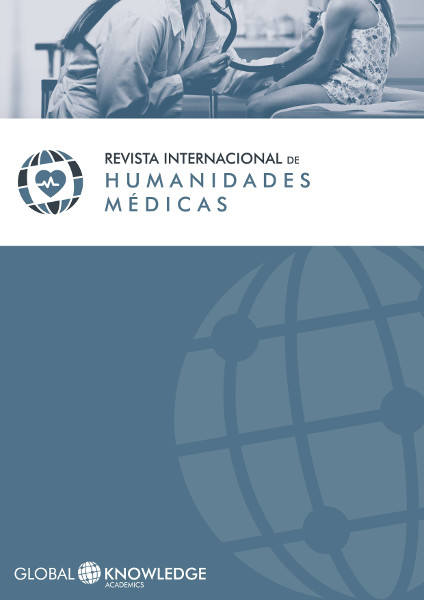Georeferenced data with mobile telephones for psychosocial therapies
DOI:
https://doi.org/10.37467/gka-revmedica.v7.2053Keywords:
Spatial Analysis, Psychotherapy, Mobile Phones, Cognitive Behavioral Therapy, PsychoanalysisAbstract
The mobile phone is rapidly disseminated around the world and can become an instrument of universal communication between people. It is of great value for mental health therapies since it can capture and offer objective data for the psychological and social evaluation of the patient. They can provide geo-referenced data for spatial analysis and cartography of the context, the social and cultural environment of the places of people's daily life, and with them it is possible to prepare maps of mental health, emotions, suffering, depression and anxiety that can contribute to the biopsychosocial diagnosis of the patient. There are great possibilities to apply the results of interdisciplinary research among geographers, psychologists and social workers in psychosocial therapies. In these pages we present the results of a systematic review of the most important scientific production identified in the academic databases based on search and selection criteria established in advance. We reflect on the contributions of spatial analysis and mobile phones for psychosocial therapies and try to define the guidelines and questions that future research should formulate.
References
Aguilera, A. (2015). Digital technology and mental health intervention: opportunities and challenges. Arbor: Ciencia, Pensamiento y Cultura, 191(771), a210. doi: http://dx.doi.org/10.3989/arbor.2015.771n1012 DOI: https://doi.org/10.3989/arbor.2015.771n1012
Asselbergs, J., Ruwaard, J., Ejdys, M., Schrader, N., Sijbrandij, M., Riper, H. (2016). Mobile Phone-Based Unobtrusive Ecological Momentary Assessment of Day-to-Day Mood: An Ex-plorative Study. Journal of Medical Internet Research, 18(3), e72. DOI: https://doi.org/10.2196/jmir.5505
Alguacil, J.; Camacho, J; Hernández, A. (2014). La vulnerabilidad urbana en España. Identificación y evolución de los barrios vulnerables. Empiria. Revista de Metodología de las Ciencias Sociales, 27, pp. 73-94. DOI: https://doi.org/10.5944/empiria.27.2014.10863
Bennett, K. (2009). Challengin emotions. Area 41(3), pp. 244-251. DOI: https://doi.org/10.1111/j.1745-4959.2008.00872.x
Bondi, L. (2005). Making conections and thinking through emotions: between geography and psychotherapy. Transations of the Institute of British Geographers, 30(4), pp. 433-448. DOI: https://doi.org/10.1111/j.1475-5661.2005.00183.x
Burns, M.N., Begale, M., Duffecy, J., Gergle, D., Karr, C.J., Giangrande, E., Mohr, D.C. (2011). Harnessing Context Sensing to Develop a Mobile Intervention for Depression. Journal of Medical Internet Research, 13(3), e55. DOI: https://doi.org/10.2196/jmir.1838
Capel, H. (1999). Rosales Varo, Carmen. Estudio geográfico de una población de esquizofrénicos y de sus necesidades en un área de Granada. Biblio 3W. Revista Bibliográfica de Geografía y Ciencias Sociales, 144(11). Disponible en: http://www.ub.edu/geocrit/b3w-144.htm
CNMC (Comisión Nacional de los Mercados y de la Competencia) (2015). Informe económico de las telecomunicaciones y del sector audiovisual. CNMC, Madrid. http://www.cnmc.es/Portals/0/Ficheros/notasdeprensa/2015/TELECOS_AUDIOVISUAL/Informe%20Telecos%20y%20Audiovisual%202015.pdf
Curti, G.H. et al. (2011). For not limiting emotional and affectual geographies: a collective critique of Steve Pile’s Emotions and affects in recent human geography. Transations of the Institute of British Geographers, 36, pp. 590-594. DOI: https://doi.org/10.1111/j.1475-5661.2011.00451.x
Davidson, J. y Milligan, Ch. (2004). Embody emotion, sensing space: introducing emotional geographies. Social and Cultural Geography, 5(4), pp. 523-532. DOI: https://doi.org/10.1080/1464936042000317677
Davidson, J.; Smith, M. y Bondi, L. (2012). Emotional Geographies. Ashgate: Aldershot.
Dunton, G.F., Dzubur, E., Intille, S. (2016). Feasibility and Performance Test of a Real-Time Sensor-Informed Context-Sensitive Ecological Momentary Assessment to Capture Physical Activity. Journal of Medical Internet Research, 18(6), e106. DOI: https://doi.org/10.2196/jmir.5398
Fundación Telefónica (2015). 16º Informe Sociedad de la Información en España. Madrid. http://www.fundaciontelefonica.com/arte_cultura/publicaciones-listado/pagina-item- publicaciones/itempubli/483/
Hernández, A. et al. (2015). Atlas de barrios vulnerables de España: doce ciudades 1991/2001/2006. Madrid: Universidad Politécnica de Madrid, Instituto Juan de Herrera.
Hernández, B. (2013). El Trabajo Social en la intervención psicosocial con personas con trastorno mental severo: una reflexión sobre el papel de las familias. Documentos de Trabajo Social, 52, pp. 314-325.
ITU (2015). Indicators database. Disponible Mobile-Cellular Telephone Subscription. En World Telecomm. indicators 12/2015, 100039398.
Kingsbury, P. T. (2009). Psychoanalysis. En Kitchin, R., Thrift, N. (eds), International Encyclopedia of Human Geography (Vol. 1) (pp. 480–486). Oxford: Elsevier. DOI: https://doi.org/10.1016/B978-008044910-4.00497-1
Kingsbury, P.; Pile, S. (2014). Psychoanalytic Geographies. Ashgate: Farnham.
Mackian, S. (2004). Mapping reflexive communities: visualizing the geographies of emotion. Social and Cultural Geography, 5(4), pp. 615-631. DOI: https://doi.org/10.1080/1464936042000317730
Mohr, D. et al. (2012). Effects of Telephone-Administered vs Face to Face Cognitive Behavioral Therapy on Adherence to Therapy and Depression outcomes Primary Care Patients. JAMA, 307(21), pp. 2278-2285. DOI: https://doi.org/10.1001/jama.2012.5588
Mohr, D. et al. (2016). Uptake and usage of Intellicare: A publicly available suite of mental health and well-being apps. Internet Interventions, 4, pp. 152-18. DOI: https://doi.org/10.1016/j.invent.2016.06.003
Moriarty, D.G. et al. (2009). Geography Patterns of frequent mental distress: US adults 1993-2001 and 2003-2006. American Journal of Preventive Medicine, 36(6), pp. 497-505. DOI: https://doi.org/10.1016/j.amepre.2009.01.038
Pile, S. (2010). Emotions and effect in recent human geography. Transactions of the Institute of British Geographers, 35, pp. 5-20. DOI: https://doi.org/10.1111/j.1475-5661.2009.00368.x
Saeb S.; Zhang, M.; Karr, CJ.; Schueller, SM.; Corden, ME.; Kording, KP.; Mohr, DC. (2015). Mo-bile Phone Sensor Correlates of Depressive Symptom Severity in Daily-Life Behavior: An Exploratory Study. Journal of Medical Internet Research, 17(7), e175. DOI: https://doi.org/10.2196/jmir.4273
Thien, D. (2005). After or beyond feeling? A consideration of affect and emotion in geography. Area, 37(4), pp. 450-454. DOI: https://doi.org/10.1111/j.1475-4762.2005.00643a.x
Downloads
Published
How to Cite
Issue
Section
License
Those authors who publish in this journal accept the following terms:
- Authors will keep the moral right of the work and they will transfer the commercial rights.
- After 1 year from publication, the work shall thereafter be open access online on our website, but will retain copyright.
- In the event that the authors wish to assign an Creative Commons (CC) license, they may request it by writing to publishing@eagora.org









